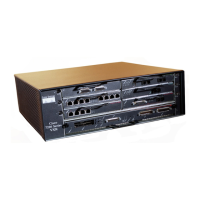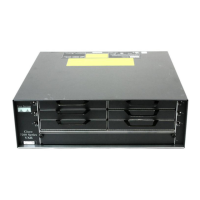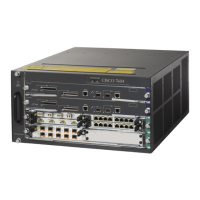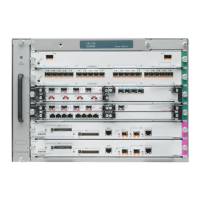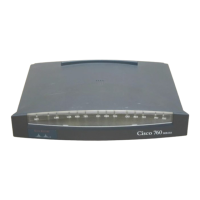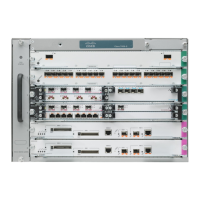3-10
Cisco uBR7200 Series Universal Broadband Router Software Configuration Guide
OL-2239-03
Chapter 3 Configuring Cable Modem Interface Features
Configuring the Downstream Cable Modem Interface
Verifying the Downstream MPEG Framing Format
To verify the downstream MPEG framing format setting, enter the show controllers cable command for
the downstream port you have just configured. See the following example:
Router# show controllers cable5/0 downstream
Cable5/0 Downstream is up
Frequency=96000000, Channel Width 6 MHz, 64-QAM, Symbol Rate 5.056941 Msps
FEC ITU-T J.83 Annex B, R/S Interleave I=32, J=4
Downstream channel ID: 0
Setting Downstream Traffic Shaping
Downstream traffic shaping enables you to use the token bucket policing algorithm with traffic shaping
options or the weighted discard algorithm to buffer, shape, or discard packets that exceed a set
bandwidth. Downstream traffic shaping is disabled by default.
To enable downstream traffic shaping for a downstream port on a Cisco cable interface line card, use one
of the following commands in cable interface configuration mode.
Verifying Downstream Traffic shaping
To determine if downstream traffic shaping is configured and activated, enter the show running-config
command and look for the cable interface configuration information. If downstream traffic shaping is
configured and enabled, a traffic shaping entry appears in the output. If downstream traffic shaping is
disabled, no traffic shaping entry appears.
Router# show running-config
Command Purpose
Step 1
Router(config-if)# cable downstream
rate-limit token-bucket
Router(config-if)# cable downstream
rate-limit token-bucket shaping
Router(config-if)# cable downstream
rate-limit token-bucket shaping granularity 8
Router(config-if)# cable downstream
rate-limit token-bucket shaping max-delay 256
Enables traffic shaping on the downstream port using the token
bucket policing algorithm. With this command, the
Cisco
uBR7200 series router automatically drops packets that
are in violation of the allowable bandwidth.
Enables traffic shaping on the downstream port using the token
bucket policing algorithm with traffic shaping.
Enables traffic shaping on the downstream port using the token
bucket policing algorithm with specific traffic shaping time
granularity. Acceptable values are 1, 2, 4, 8, or 16 milliseconds.
Enables traffic shaping on the downstream port using the token
bucket policing algorithm with specific maximum traffic shaping
buffering delay. Acceptable values are 128, 256, 512, or 1028
milliseconds.
Step 2
Router(config-if)# cable downstream
rate-limit weighted-discard 3
Enables traffic shaping on the downstream port using the
weighted discard algorithm and assigns a weight for the
exponential moving average of the loss rate. Acceptable values
are 1 to 4.
Step 3
Router(config-if)# ^Z
Router#
Exits back to EXEC mode so that you can verify the steps.
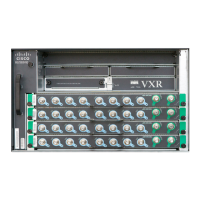
